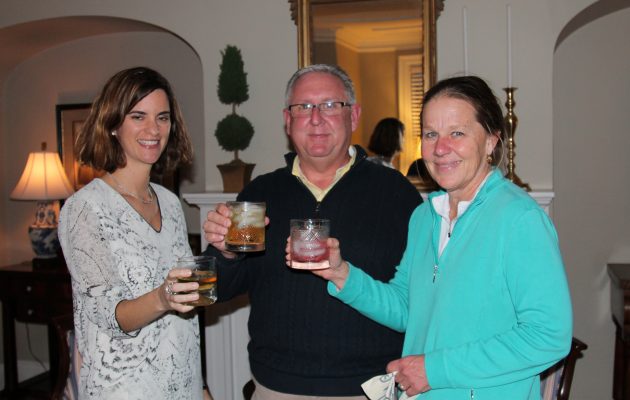St. Johns Quarter gets new zoning
Posted on February 4, 2016 By Editor Articles, Neighborhood News, Top Stories

In what appears to be a pre-emptive strike against future intense commercial development of the area known as St. John’s Quarter, owners of 57 properties in a 10.47 acre portion of Riverside received approval for rezoning.
Following the July 2015 enactment of Bill 2015-338, which introduced a new zoning district to the City of Jacksonville Zoning Code, District 14 Councilman Jim Love introduced Bill 2015-737 to City Council on Oct. 27, 2015 specifically for the purpose of rezoning a small portion of Riverside. The bill was approved City Council on Jan. 26, 2016.
The change to the Zoning Code was proposed last year by property owners in the St. John’s Quarter to return historically residential character areas to Residential Office usage.
The intent of the rezoning from CRO (Commercial Residential Office) to RO (Residential Office) is to protect the residential character of this historic neighborhood within the Riverside area, and prevent the intrusion of generally more intense commercial uses present in nearby retail areas such as Historic 5 Points, Riverside Avenue, Oak Street, and Park Street, according to the Planning and Development Department staff report.
“This little piece of paradise needs to be saved,” said John Hurtubise, a property owner in the St. John’s Quarter. “This is the most spectacular part of the river; it should be protected.”
Hurtubise said CRO zoning was applied in the 1980s to accommodate St. Vincent’s Medical Center and the area began trending toward what he described as “institutional.”
“CRO is a slow death for a neighborhood,” he said. “It’s not favorable zoning for the long-term viability in an historic district.”
Push to take back district began decades ago
The fight began in the 1990s when a group of property owners first opposed the development of a nursing home on Riverside Avenue and then battled the conversion of an old home into a medical building.
“In 1993, the Florida Retina Institute was going to put in a high volume clinic, and we had to fight this as a neighborhood,” Hurtubise said. “Now at least when you say ‘residential’ it will prevent large institutions from coming in here.”
After getting a residential buffer from the city, Stockton Street became the dividing line between commercial development and what is now the St. John’s Quarter. The Quarter was named by the late Jerry Spinks, who 20 years ago helped put into place a restriction that prevented residential buildings from becoming commercial, according to Hurtubise.
“Jerry was one of the most magnificent people. He said we need to do something that makes this a special area, and he came up with the name,” said Hurtubise.
“The city basically gave us a residential buffer and forced everything [commercial] to go up and down Stockton Street,” said Joanne Purdie, who lives on St. Johns Avenue. “Our old zoning in 1989 was RMOI (resident multi-family office and institution), then got converted into CRO. This brings the “R” back for residential office,” said Purdie.
William Deas has operated a law firm in the St. John’s Quarter since the 1980s, and his daughter, Alexandra Deas, is an attorney in the firm as well. She was part of the small group who helped push the rezoning.
“The character of the neighborhood is so important, and we need to preserve it. The goal is to limit incompatible uses,” she said. “It’s such a small, special neighborhood, and we have to do everything we can to protect it.”
Nearly a year ago Hurtubise, Purdie and Deas approached Councilman Love about rezoning this specific riverfront area, then the plan morphed into something more encompassing.
“Susan Grandin [of the Office of General Counsel] wanted to develop something that could be used all over the city,” said Purdie. “And then after that [Bill 2015-338] passed, we applied for our own RO zoning.”
Hurtubise spearheaded the movement to get Bill 2015-737 introduced, and went to each of the 57 properties in the St. John’s Quarter, garnering 87 percent in support. Those who did not respond were primarily non-local landlords.
“The message is getting driven downtown,” said Hurtubise. “From all the battles, we learned that as an individual or a group you can make things happen.”
By Kate A. Hallock
Resident Community News




 (No Ratings Yet)
(No Ratings Yet)




